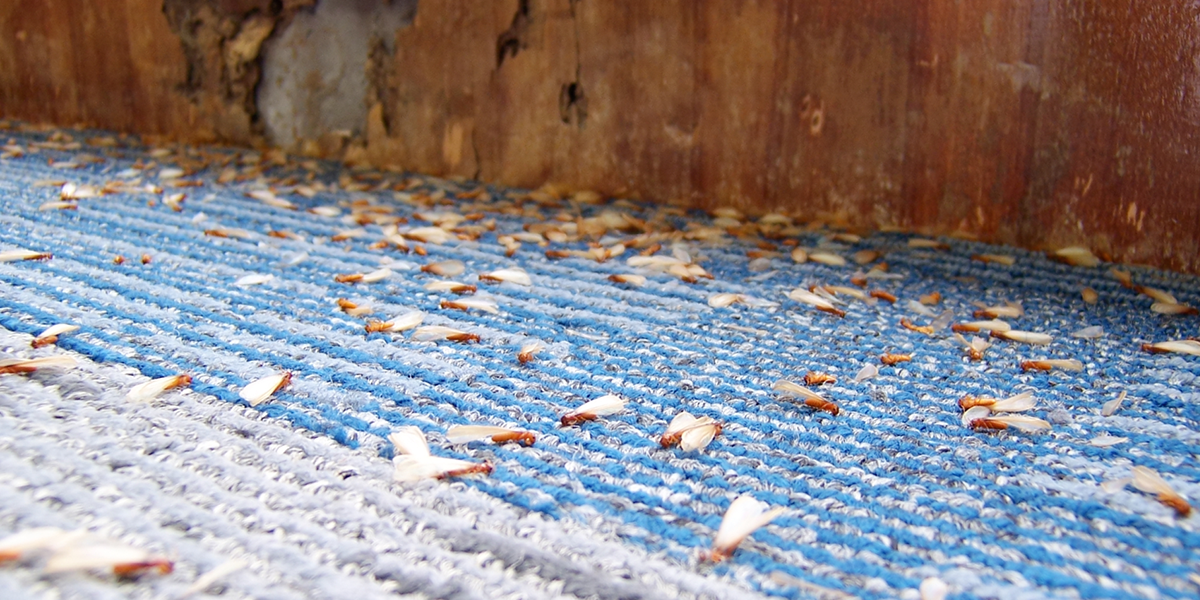For public and affordable housing organizations, hidden threats can be as damaging as visible hazards. One of the most destructive? Termites. These “silent destroyers” cause billions in property damage every year, yet insurance carriers rarely cover repairs. In multifamily housing, the stakes are even higher—structural integrity, resident safety, and operational budgets can all be compromised if termites go undetected.
When you might have a problem
Imagine walking through a property and noticing a section of wall that sounds hollow when tapped, or a resident reporting a strange pile of tiny wings on a windowsill in their unit. These are just a few of the red flags signifying that termites could be at work behind the scenes.
Other signs include:
- Bubbling paint
- Mud tubes on exterior walls
- Swarms of winged insects near lights
Because termites often operate out of sight, you may not notice the damage until it’s advanced, making early detection critical.
Why acting quickly matters
Once termites establish a colony, they can feed on wood 24 hours a day. Left untreated, the damage worsens and repair costs escalate. The proper treatment depends on the type of termite—subterranean, drywood, or dampwood—and the size and location of the infestation. It’s essential to bring in a licensed pest control specialist who can correctly identify the species and recommend the most effective approach.
Your treatment and prevention toolkit
A professional may suggest soil-applied termiticides to form a barrier, bait systems to disrupt reproduction, or wood treatments to protect vulnerable areas. If your agency is building new construction or conducting major renovations, consider implementing physical barriers like steel mesh or termite-resistant materials for long-term protection.
You can reduce the risk of infestation by:
- Fixing leaks and eliminating moisture problems promptly
- Keeping gutters clear and water directed away from the foundation
- Sealing cracks and gaps around pipes and utility lines
- Storing wood and paper products away from structures
- Maintaining ventilation in crawl spaces
Choosing the right partner
Before hiring a pest control company, request multiple quotes, verify licensing and insurance, and ask about warranties and safety protocols. Review the proposed methods and timeline, and consider having your HAI Group account representative review the contract to ensure favorable terms from an insurance perspective.
The bottom line
Termites may be small, but the damage they cause is anything but. Staying alert to warning signs, acting quickly when you suspect a problem, and implementing preventive measures can protect your properties, budgets, and residents.
For additional guidance on pest management, contact your dedicated risk control consultant.
This article is for general information only. HAI Group® makes no representation or warranty about the accuracy or applicability of this information for any particular use or circumstance. Your use of this information is at your own discretion and risk. HAI Group® and any author or contributor identified herein assume no responsibility for your use of this information. You should consult with your attorney or subject matter advisor before adopting any risk management strategy or policy.
HAI Group® is a marketing name used to refer to insurers, a producer, and related service providers affiliated through a common mission, management, and governance. Property-casualty insurance and related services are written or provided by Housing Authority Property Insurance, A Mutual Company; Housing Enterprise Insurance Company, Inc.; Housing Specialty Insurance Company, Inc.; Housing Investment Group, Inc.; and Housing Insurance Services (DBA Housing Insurance Agency Services in NY and MI).






